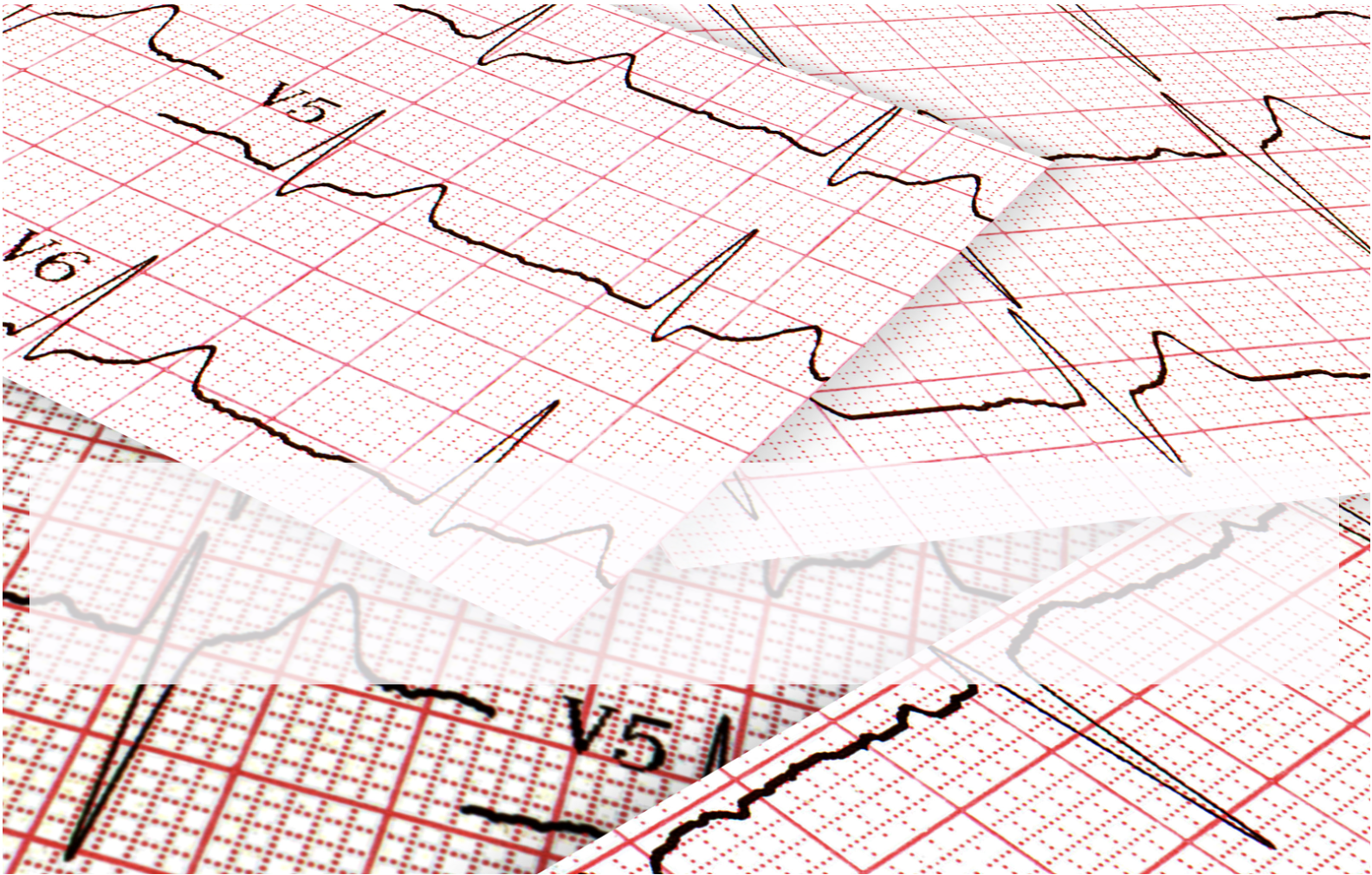His blood pressure at presentation is 85/65.
His initial ECG shows that he is in rapid atrial fibrillation.
It is decided to cardiovert this patient.
His cardiac tracing immediately post cardioversion with a biphasic defibrillator at 200J, with pads in the antero-posterior position is shown below. What does it show?
What do we do with this? Is it significant?
Transient ST segment changes post cardioversion are well described. Their significance is uncertain.
Hypotheses for the ST segment changes include:
- Coronary Artery Spasm- Although the time it takes for the spasm to occur and the time it takes for changes appear don’t seem to coincide ie., the changes occur much earlier.
- Acute Myocyte necrosis- Cardiac Troponin levels are not necessarily raised.
- Potential differences between depolarised and non-depolarised parts of the membrane
Regardless of the reason that they occur, these changes are transient, and thought to be of little consequence.
However, given that Brugada patterns predispose to ventricular arrhythmias, it may be prudent to monitor these patients for a period of time.
Read more on Brugada Syndrome and How to diagnose both Type I and Type II in the Cardiac Bootcamp Course.
References
1. Abdalla K et al Transient appearance of Brugada-like Type 1 electrocardiogram pattern immediately after biphasic synchronised electrical cardioversion for atrial fibrillation: a case series. European Heart Journal – Case Reports, Volume 3, Issue 4, December 2019, Pages 1–8





